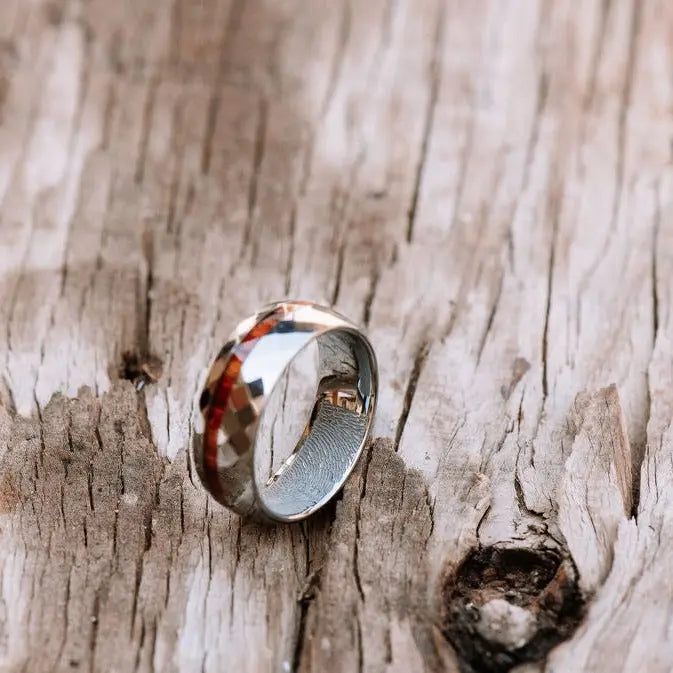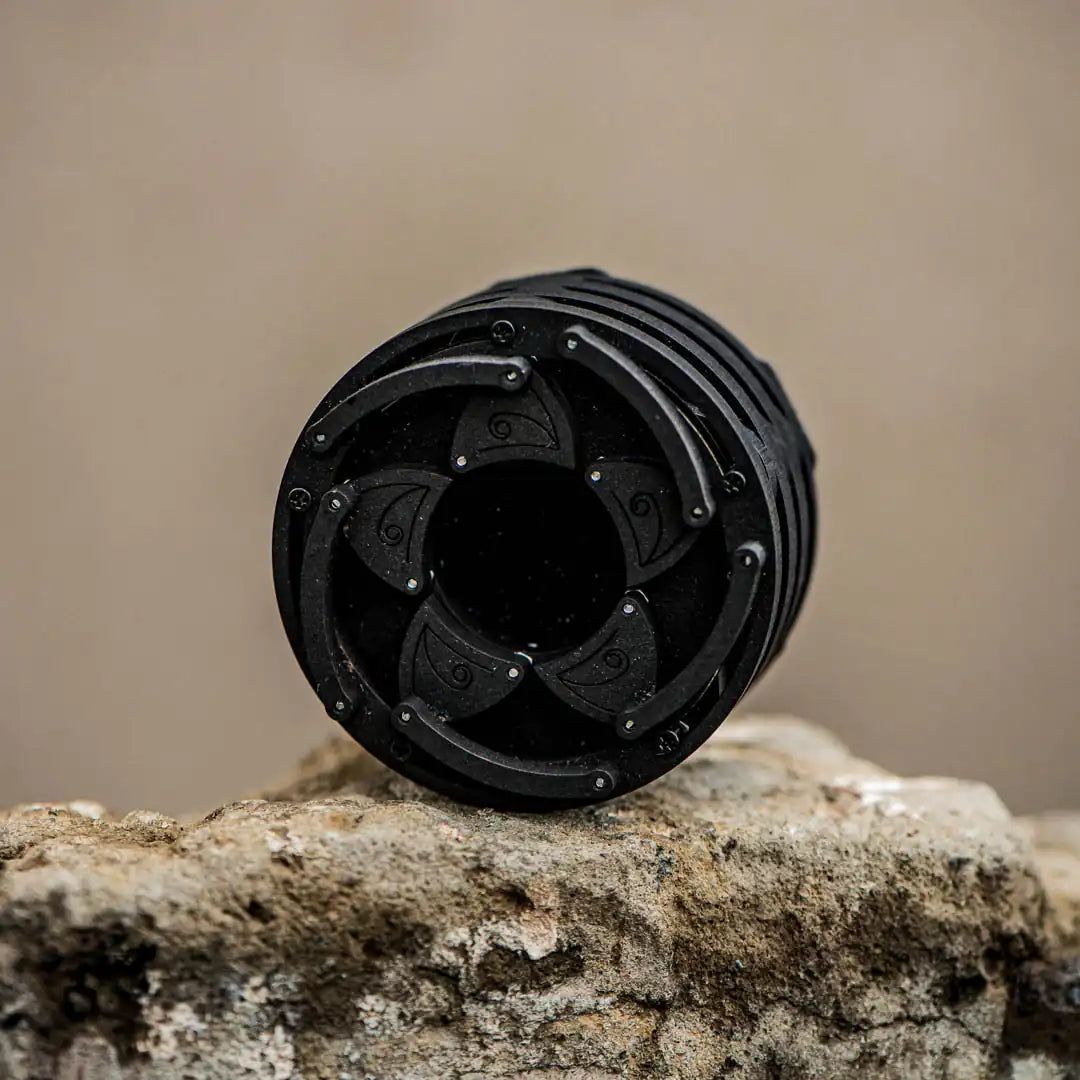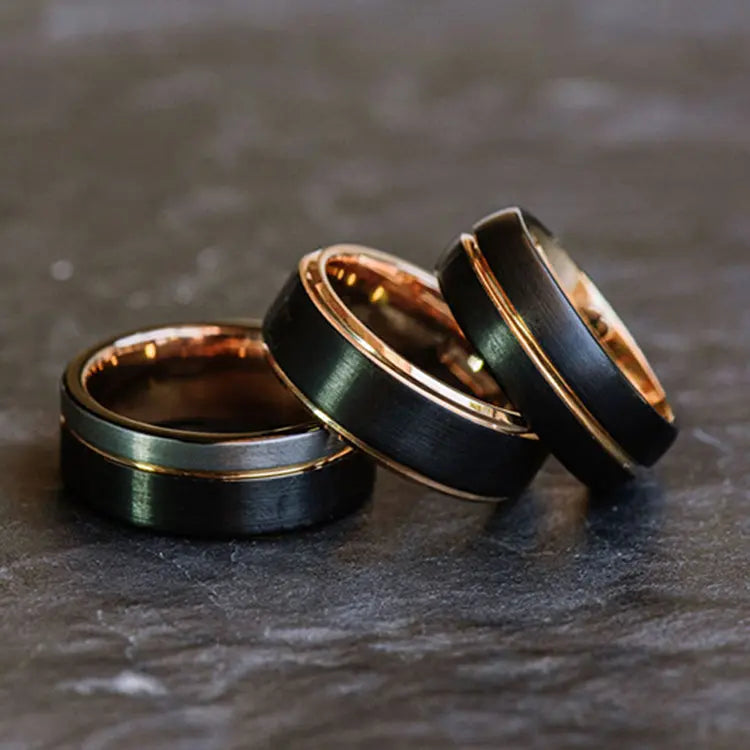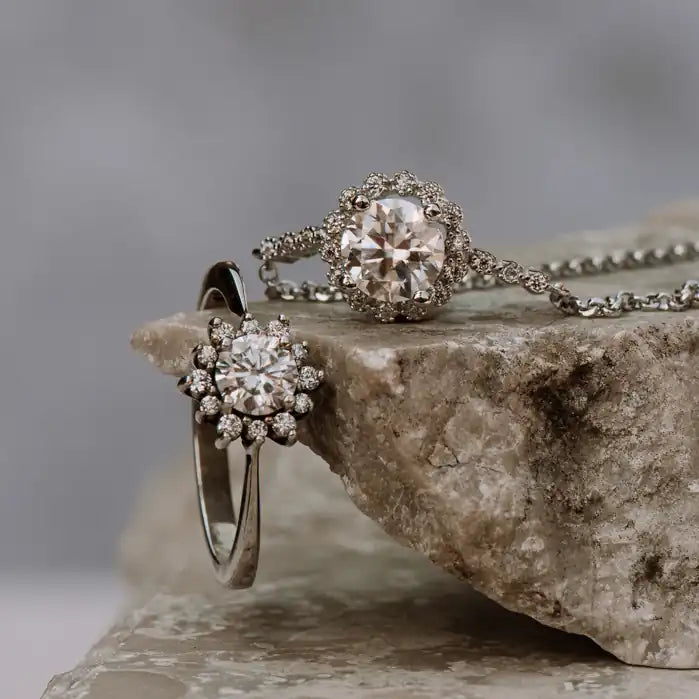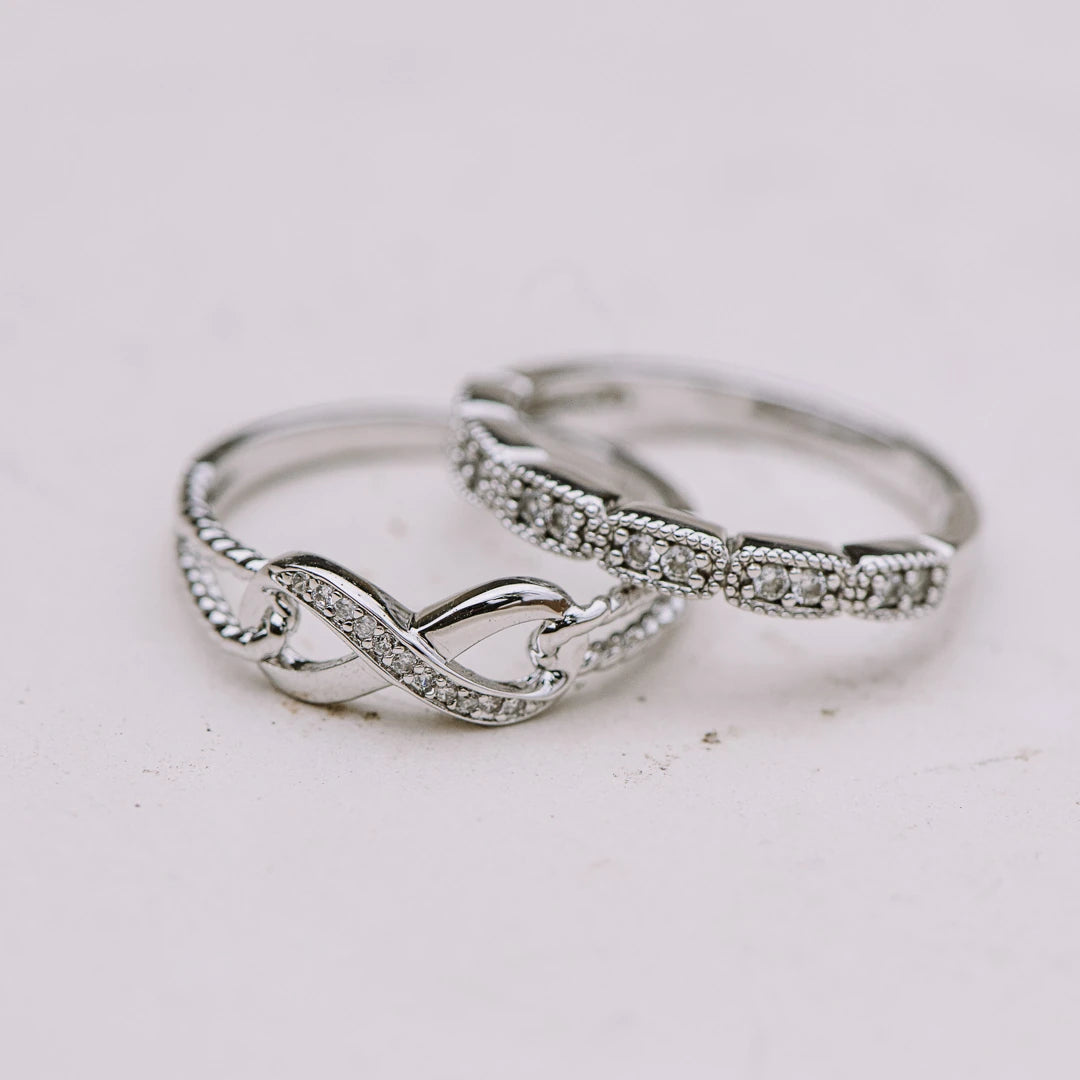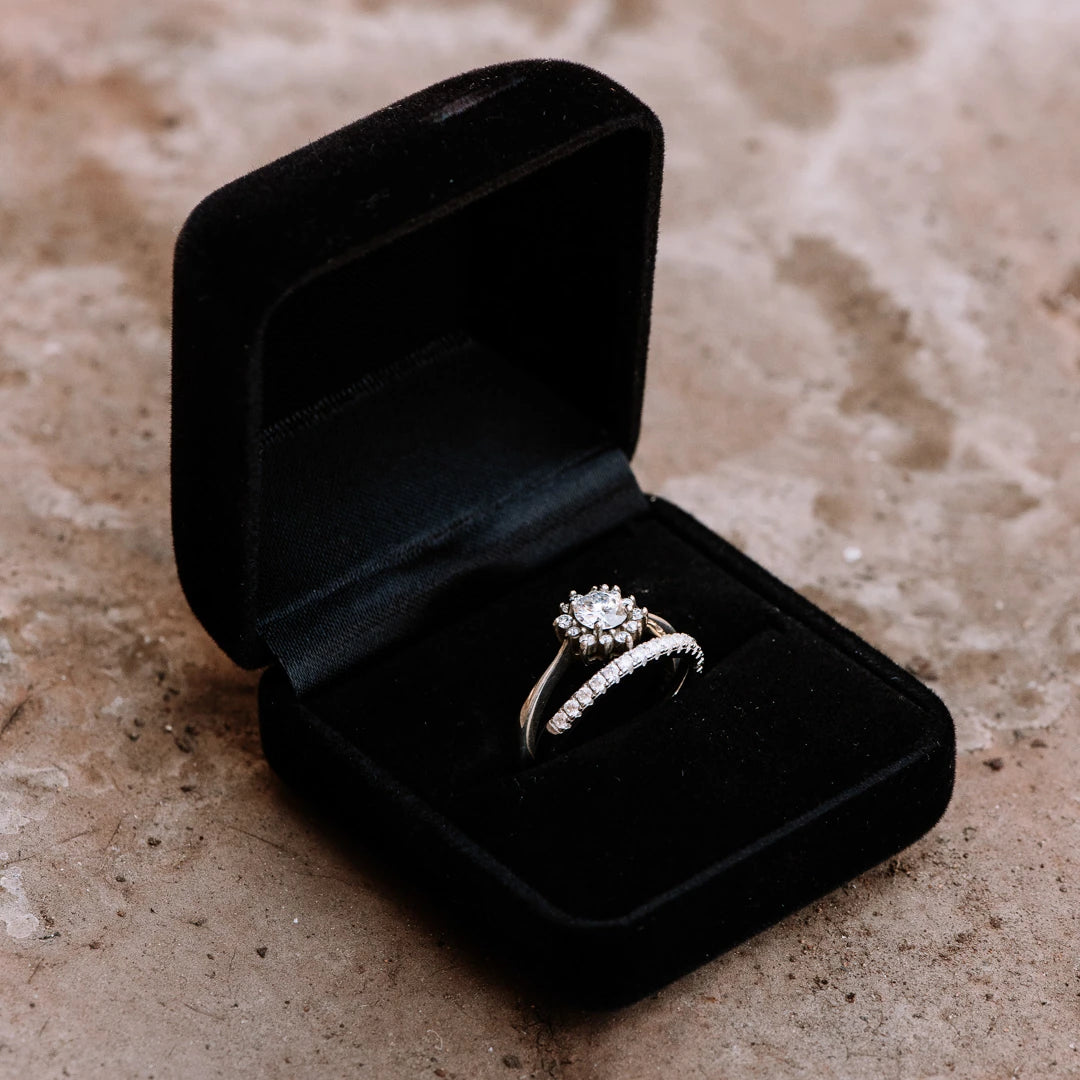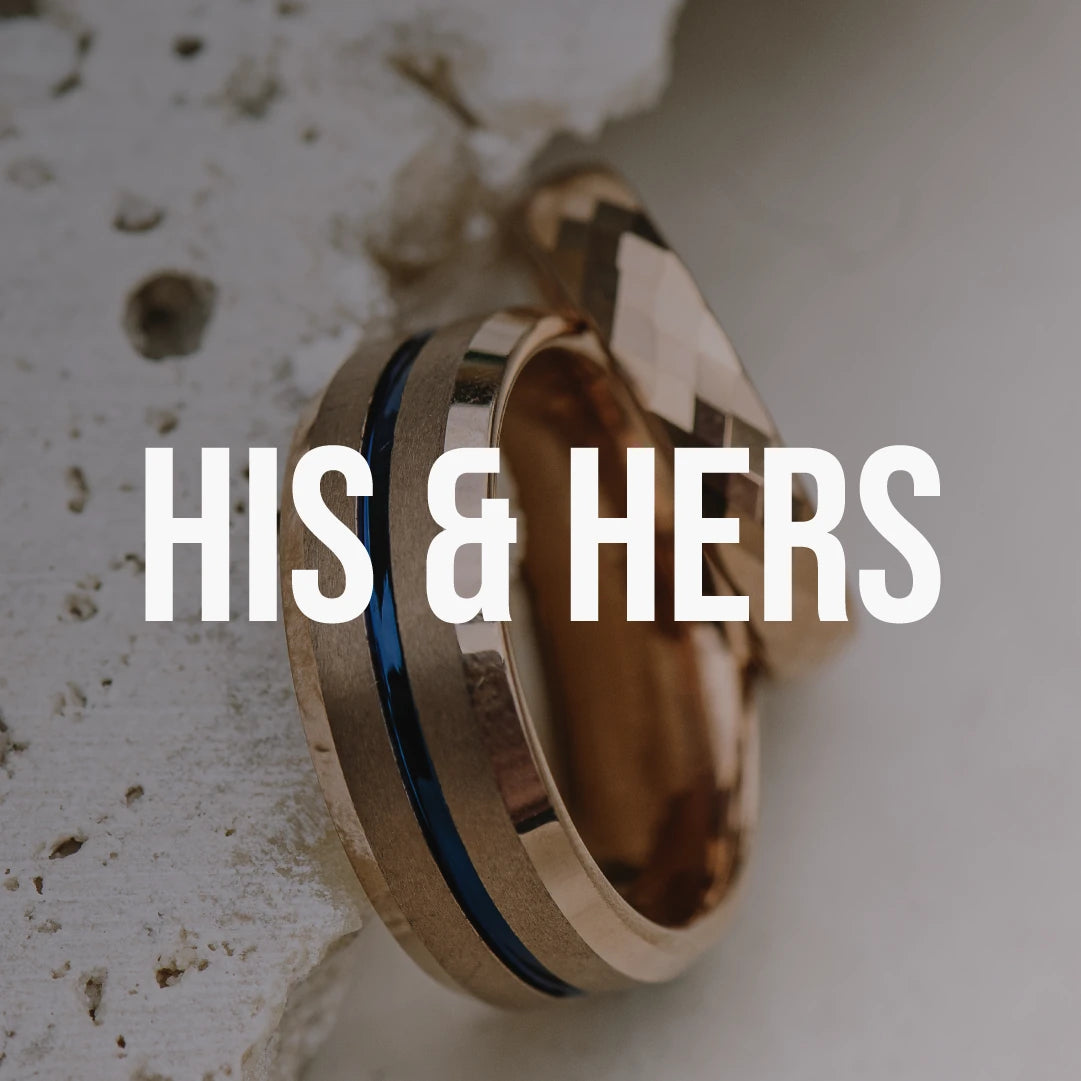It’s Heritage month. We decided to dig into the history, tradition and symbolism behind a wedding ring or band. Wedding and engagement rings are a billion-dollar industry. A billion dollars to indicate love, passion, commitment, betrothal, belonging and union.
In ancient cultures a circle was a symbol of eternity. It has no beginning and no end. It indicates an area of activity, sphere of influence, jurisdiction, authority, domain or territory. Whereas, the space in the centre of the circle (the hole) was also important as a doorway for future happenings and experiences to pass through. A ring (circle) or wedding ring is significant as symbol of infinity and completeness, of protection and recognition, but also of authority and belonging. It symbolises infinite, total and unbreakable love.
The myths, beliefs and cultural customs surrounding the wearing of a wedding band and the hand or finger used for that was discussed in our blog Why the fourth finger? Suffice to say that it is considered bad luck by some to remove your wedding band once it was placed on the finger. And, once you wear that ring it might leave an indentation or white line on the skin, which is visible if you remove the ring. Tell tale signs that you’re spoken for and off-limits!
In Egypt, some 4000 plus years ago, women wore wedding rings made from natural materials like rushes and reeds, according to info that was found in papyrus scrolls and relics of that time. These were twisted and braided and worn as decorative ornaments. But, hey these soon turn brittle, brown and ugly. It is said that previously, men banded the ankles of the bride-to-be with these rushes or reeds to keep her soul from escaping, once he decided that she was the ONE. But, it might be that he feared a runaway bride! On the wedding day, he would take these off and braid it into a finger ring. These were soon substituted by more expensive rings made of leather, bone and ivory. The wealth and degree of love the giver demonstrated was shown by these. Love until eternity and into the afterlife for that matter.
Then follows ancient Rome and Greece. They offered rings not just as a symbol of love, but of ownership and a promise of fidelity. Romans claimed their woman by giving them rings made of iron (sometimes engraved) to symbolise strength and permanence (Anulus Pronubus) of the betrothed to her husband and master. No trace of romance there.
The tradition of betrothal or promise rings dates to earlier times when a girl was promised to her future husband because of cultural, family or business agreements. The poor lady had mostly no say in the matter. The suitor gave her a valuable ring in exchange for her father’s approval and to indicate his ownership of this lady. The bigger and more expensive the ring – the wealthier and more important the future husband. The promise ring usually indicated commitment to the future: by getting engaged, married, staying together forever or abstinence until marriage. One could argue that the latter-day high school class ring was also a “promise” ring, indicating that a couple was now an “item” or in a relationship. In modern times engagement rings became the norm, usually adorned with diamonds or any precious stone to the lady's liking.
It was also during these earlier times that the bridegroom had to pay for his new bride with gold and silver coins. That is why the words: “this gold and silver I give thee” follows the initial: “with this ring I thee wed.” Perhaps this is where the African tradition of Lobola originated. The groom must pay the bride’s father for the privilege of marrying his daughter. Sometimes the groom was marrying his bride on condition that her father pays a marriage portion or dowry to him for the support and comfort of his daughter. I know of some dads that will still today (jokingly) pay someone, anyone to take their daughters off their hands.
Early Christians wore rings that was elaborate with doves, linked hands and hearts. Or, figures depicting the bride and groom with Christ in the middle, binding the marriage and their love. As time went by, such decorated and over-the-top jewelry was regarded as heathenish. John Wesley reminded the congregation in his church that costly outward adornments like gold, silver and pearls was not to be allowed as aids to make yourself beautiful. Rings became plain and simple. Christian churches differ on the symbolism of the ring, on which finger it should be worn and whether to wear a ring at all. The traditions and rites during the ceremony also differs from church to church.
Historical styles of wedding rings showed the various traditions and beliefs of the different cultures. These had symbolism and meaning (whether used as talismans, symbols of status and wealth, signet or signature rings or indicating commitment, legal contract of marriage or true love)
Puzzle rings consisted of several pieces, like that of a puzzle. These joined together in a specific manner (very difficult to assemble or take apart) to form a wedding band. The husband happily put the puzzle onto the lady’s finger and beware – should she try to take it off he would have known immediately. Talk about possessive. No unfaithfulness on the bride’s part.
Gimmel rings were made up of two or more equal, interlocking bands. One for the future bride and one for the future husband. During the wedding ceremony the two bands were combined, and the bride got to wear this combined ring on her ring finger signifying unity and commitment. A tradition followed to some extent today, with the engagement ring (sometimes worn by both) and then adding wedding bands during the ceremony to confirm and symbolize the marriage, promises and vows. Some of these rings had intricate designs like forget-me-not flowers, red hearts, or symbols of life (eternal love) and death (beyond this life). Life was featured by a baby and death by a skeleton. Wow boy, am I glad I do not have to wear a skeleton on my commitment ring!
Fede rings featured two hands joined together, clasped in betrothal and fidelity. Intricate designs and interlocking styles. Difficult to put on and take off. During these years the future husband surely had to practice putting the various styles of rings together before the big day. With the stress and nerves during the ceremony the bondage might be broken before even starting, because of the husband not getting the combination together.
Poesy (poem, short verse or ballad) rings were popular as it was usually made of silver or gold, and engraved with poems of love and passion. The engravings were on the outside of these bold rings, sometimes with gold coins on top with the verse engraved onto that. The skills and techniques of the goldsmiths and jewellers were tested. Engravings moved to the inside of the rings, to keep these inscriptions private. These verses were usually corny and passionate like “Two bodies, one heart”. The future husband had to pick his words of love very carefully as we all know that there’s not a lot of space for words on a ring, never you mind a poem. There are still couples engraving their rings with names, dates or words important to them.
In Colonial America jewelry was regarded as frivolous and a wasting of money, as John West also believed. Practical items were the norm. Like thimbles. Even on their wedding days the ladies had to be reminded that they had a lot of jobs and dirty work to look forward to once married. Some of them were clever though and removed the tops of the thimbles to make it into metal bands that they could wear on their fingers.
The first diamond ring(uncut) known to mankind was found in Rome in the late 100sAD – it belonged to a young girl. The reason behind such valuable stone for a young girl? Love, status, something else? Nobody knows.
The smallest betrothal ring was given to Princess Mary, the daughter of HenryVIII and Catherine of Aragon. She was later known as Mary Tudor, and also “Bloody Mary” for all the killings of Protestants under her Roman Catholic reign in England as Queen Mary. This gives a whole new meaning to a Bloody Mary, don’t you think? She was two years old at the time, when her father arranged a potential future marriage for her with Francis, the infant son of the King of France. Her godfather placed the magnificent diamond ring on her finger in 1518. The poor child thought that he was her husband-to-be and asked if she could kiss him.
The first diamond ring ever documented as an engagement ring was given by Archduke Maximillian I of Austria (House of Habsburg) in 1477, to his betrothed, Mary of Burgundy.
The Greek word adamas, meaning strong, indestructible and valuable gave way to the word diamond. A diamond is the strongest mineral on earth, that is perhaps why diamonds are so popular as symbols for eternal, indestructible love lasting a lifetime. Forever! It was De Beers who popularised diamonds for use in engagement rings, in 1947 with the slogan 'Diamonds are forever'. They had the tools to reveal the sparkle and excellence of these exquisite stones, which soon became the accessory of choice for the rich and famous. Up to today, a diamond is a girl’s best friend, as sang by Marilyn Monroe in one of her movies.
Nowadays some couples (especially in celeb-circles) get a tattoo on their ring finger to signify their commitment. Forever and permanent, no joke! Silicone wedding rings are an even newer trend. Comfortable, funky, safe and easy on the finger. An Orbit (circle, ring) Silicone Wedding Ring is a nice way to symbolise the “Infinite and endless” union of you and your loved one, by placing this wedding band, with “no beginning and no end” on the ring finger of your beloved.
FUN FACTS
- During the 2nd World War, 1942, with restrictions and regulations on the use of various resources like gold and the manufacturing of gold rings, the so-called utility rings were made with a special mark indicating compliance to these restrictions. 9ct gold (not heavier than 3 grams) was to be used and not 22ct as was the norm during that time.
- Guests believed that taking a piece of the bride’s wedding gown will bring them good luck. Imagine the look on the bride’s face when guests starting ripping and tearing pieces off the dress. That’s when the tradition of throwing the garter and later the bouquet started. The bride (and groom) now had something to give the guests in the place of pieces and tatters.
- Greeks believed that a sugar cube in the bride’s glove will bring good luck and sweeten the marriage, while Egyptian brides got pinched by her lady guests to ensure good luck.
- In Czechia peas are thrown at the couple, while in eastern countries rice has the purpose of bringing good luck and prosperity. And according to the English, a spider in the wedding gown spells good luck. In ancient cultures it was believed that the veil kept evil spirits from the bride, while she is protected from these spirits by her groom carrying her across the threshold.
This is the weird and wonderful world of history and heritage.
Enjoy the Moments!
You make your own traditions and build your own memories.


